1 Hour Solar Production - 1 Hour Energy Consumption
=
Amount of kWh that will get an NBC attached to them. Like a leech.
See You on the bright side!
That... they WILL tell you!
The good thing is you're mindful. That's why you're here. Otherwise, you would have fallen for that.
Just one more thing before we start. The average read time of this article is of 28 minutes. But rest assured you won't get bored, not even one single bit. So buckle up, grab some popcorn, and read up! NO slacking! 💪
In case you don't have that much time... If there's one thing you need to take from all this, that would be Section #2, from top to bottom.
If you do have time to go through all of it, I encourage you to do it because you're in for a ride that will blow your mind into another dimension just like in The Matrix®.
With no further ado, here are the 6 things that solar companies will not tell you even if you're already part of their ranks.
(Which by the way, happen to be the most important facts you need to be aware of, before going solar in California).
Coincidence? I don't think so.

Life gets in the way, even for solar panels.
Let's pretend that 3 years after getting your solar, you're ready to get that brand new electric F-150 or Tesla. You're so excited... "A good-looking car, and to top it off, it's electric!"
Well, I'm sorry to be a killjoy here, but that's actually bad news.
Now your solar won't be able to cover 100% of the electricity you'll be consuming, since your system was designed without taking that into consideration.
Properly assessing your house's needs is not enough in today's day and age.
You as a customer, and most importantly the company, need to take measures to account for your future plans to avoid road bumps down the line.
But hey, we as companies, are the ones supposed to know that. Not you!
When one goes and tries to buy some stuff, we expect the company we're talking to, to be aware of all these things and little details. That's why they're a business in the first place right?
So the real question here is, why would they not bring this up? Are they deliberately hiding this or are they guilty of not even knowing it?
Things like building a pool, getting an electric vehicle, or remodeling your house, drastically increase your electricity usage.
And if that happens after you went solar, you're going to get a big portion of your energy bill back.
But the worst part would be that by the time that happens, the legal framework for solar might have already changed (as you're about to see) and the controlled environment for solar savings to keep happening, will get thrown off.
Let's take for example this guy:
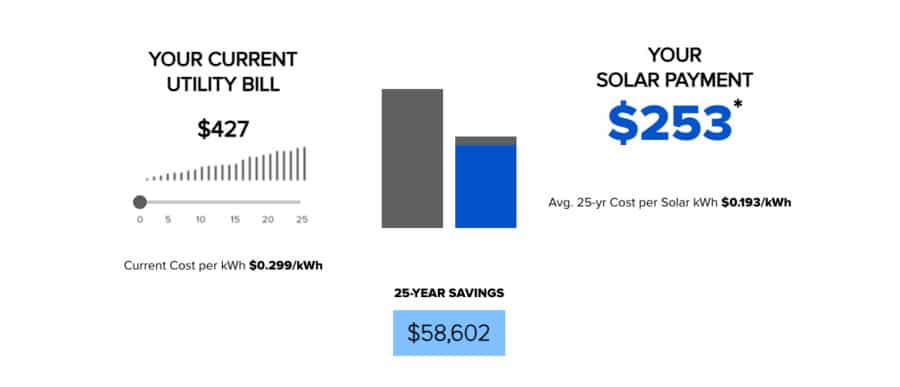
His average energy bill was $427, and with financing, he was going to pay a monthly fixed price of $253 for his solar. That would have yielded $58,602 in savings in the span of 25 years.
A system comprised of 34 panels was going to do the trick for him. In the beginning...
But he was going to make some expansions on his house real soon and was also going to buy an electric vehicle.
The average electric car consumes 80 kWh per week. That's around $25 of weekly electricity, times 4 weeks that's $100 per month.
Add to that $42 per month to account for the house expansion, and that would end up being an extra $142 that he would have to pay, yet again, to the energy company.
$253 of his solar and $142 to be paid to the energy company would be a total of $395.
Still better compared to the $427 he was paying without any of those two things.
But his savings wouldn't be $58,602 anymore, they would drastically go down.
To factor that in, his project was redone and ended up having 46 panels. His monthly payment with financing came out to be $291 and his savings $89,600. Even better than the $395 he was going to get.
It's always better to be safe than sorry.

You could also look at it from a -¢ per kWh- perspective. Going solar is like if your energy company suddenly lowered the kWh from ¢29 to ¢19 and were like: "Hey y'all! Enjoy our new prices!"
But the best part is that his project didn't only account for his plans, things like NBC's and TOU Rates were also taken into consideration. Don't know what is that? Keep reading because it's about to get spicy.
And where do such savings come from?
Everybody says that solar will save you money but they never say how. Let's demystify that!
If you live in California, solar is way cheaper than staying with an electric company as you might have seen in the images above. This is because our electric rates are among the highest ones in the USA.
But solar being cheaper right off the bat is only 1 of the 2 ingredients needed to create such savings.
Here is the second one:
Energy is produced by burning oil, and oil is a commodity. That means its price is influenced by several external factors like stock markets, state of the global industry, inflation, and basic laws like supply & demand.
Every one of these factors plays an important role, but the last two have a huge influence on the price. The lesser oil there is, the higher its price will be.
Cities are ever-growing and the supply is only so much. As a consequence of that, we get yearly inflation; which for California is at 3% on average, as indicated by the (U.S. Bureau of Labor Statistics, 2021).
Now, what do you think would happen if you were to avoid those yearly price raises?
Yup, you'll get the so-called solar savings.
Oh, and forgot to mention, to make it even more dramatic, down here is an image of the same guy from above, but with a top-notch battery included in the quote. Still cheaper than standard electricity!
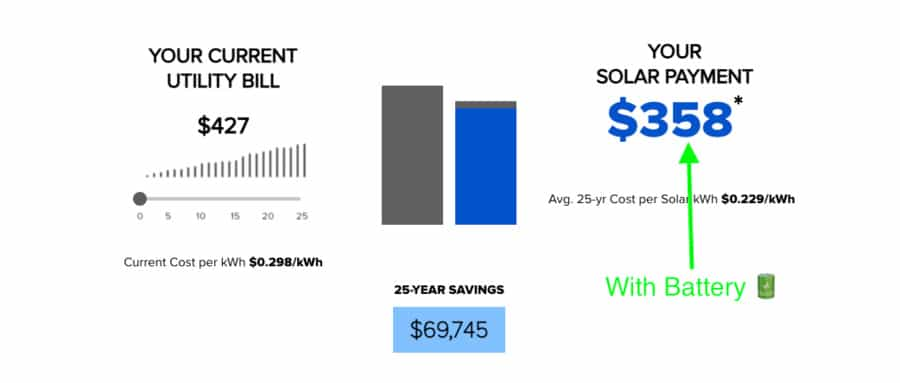
Eliminating external factors that could harm your finances? OR Keeping them in your house and your life?
Paying less right off the bat and saving tons on the way? OR Riding the price-increases rollercoaster while filling the pockets of evil till the end of time?
Why evil? You're about to see.

To understand this we're going to travel back in time. Welcome to Solar History 101.
Back in 1995, it all started when senate bill SB 656 was passed. Although it had things like a cap on the system size and vague laws, it did lay the groundwork for what would become a nationwide movement.
Since then, many states have followed suit by implementing similar policies, but as of today, some of those have also backtracked. And sadly, California is about to become one of them.
Why?
From the moment this started, there has been an ongoing war between the solar advocates (inside & outside the government) and the energy monopolies. Or monopoly? That's a subject for another day.
They've been doing everything they can to put a stop to the solar uprising, just like in Terminator®.
And it just so happens that Arnold Schwarzenegger was the one who kickstarted that uprising in 2009 when he signed senate bill AB 920 and gave birth to a new era; that of the Net Metering.
The legal framework in it made California one of the best states for solar. It stated that every kWh produced by a renewable source would have to be credited at the current market value or 100% of its value.
Example: Let's pretend that back then, any given utility was selling the kWh at ¢15. That means that every kWh produced by solar would get credited at ¢15 as well. A 1:1 rate.
And why would you need to get "credited"? What does a 1:1 rate do?
To answer that, let's zone in on something that will help you better understand it before we keep moving forward...
Have you ever wondered how do you get your energy at night when the sun is not feeding your solar panels? That's where net metering comes into play.
During the day, there are hours where your panels will produce more than what you can use in that precise moment and hours where they just won't produce. Take a look at this graph:
Image taken from our friends at NorcalSolar.org
As you can see, the sun starts coming up and with it your production, then around noon peak production is achieved, and from there it starts to ramp back down.
The thing is, at hours of peak production, you're probably only going to be using around 40% of the energy available at that moment, and that excess has to go somewhere...
Well, it goes into the grid.
💭 Think of net metering as a bank that stores your excess energy on the grid, while you're waiting for the hours without sunlight to arrive.
But what if we were to look at it from a week's perspective or even a whole year instead of a 1-day window?
The same thing would happen.
During the year there are seasons and months where you'll consume more than what your system generates (typically summer), and others that work the other way around.
At the end of the year, they balance each other out.
Take a look at this 1-year graph. The light-blue line is the solar production and the blue bars are the consumption for that month:
Can you see how the year's worth of electricity generated by your system, equates to 100% of what your house would use during that same year? (Assuming that your system was properly designed of course, as we spoke about in Section #1).
Now that you know the excess energy goes into the grid, you might already smell where I'm going with this...
What do you think would happen if it didn't get credited at 100% or a 1:1 rate? Let's think of an arbitrary value here, and say that instead it got credited at 75% of its value or -1 to 0.75-, like in Nevada.
Example: Imagine that in March, your system generated an extra 500 kWh that you didn't use. If the energy company sells the kilowatt at ¢30, that would be 150 bucks worth of energy (500kWh x $0.30 = $150).
But instead of storing those $150, they would only store 75% of that which would be 112 bucks ($150 x 0.75% = $112).
Can you see why Schwarzenegger deserved an Oscar for his performance when he secured a 1:1 rate for homeowners with solar in 2009?
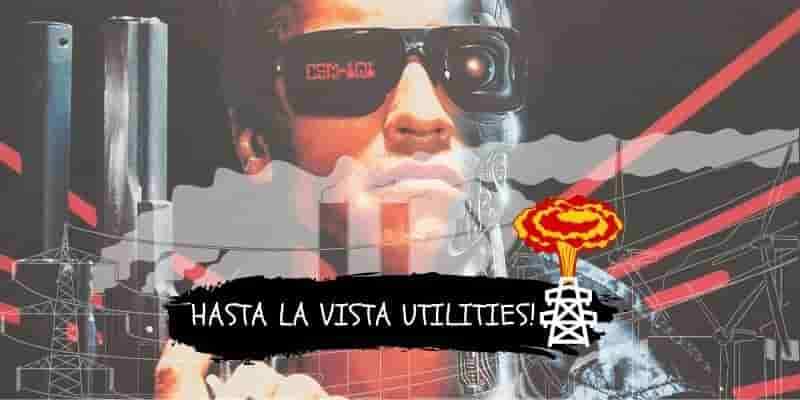
Utilities were officially Terminated with the Net Metering Bill. Their high commands and executives probably puked when they heard of it.
It is no secret that they don't like what solar can bring onto them. Even during the 90s, when the groundwork was barely set, they made sure to manifest that discomfort.
But this time it was worse. Thanks to that framework, solar started growing uncontrollably. And that poked the bear.
States started looking up to California. Everyone was happy. Except for them of course. And they were not going to let their huge profits evaporate in the blink of an eye...
They knew Net Metering was designed to be revisited once the total solar installations for each utility (PG&E, SCE, and SDG&E) reached 5% of the total peak electricity demand.
So it was only a matter of waiting for that to happen...
Fast forward, in 2016, their opportunity came and they made their move by arguing that solar owners were still using their precious, and most importantly, privately-owned grid for their benefit, and to them, that was unfair.
They said that people with solar were not paying their fair share for things like grid maintenance and electricity delivery and that due to that, they were forced to raise the prices for people without it. Because somebody had to pay for it.
But wait... Were we not already paying for that grid usage with the Minimum Delivery Charges? (I'm also going to explain those below in case you don't feel like reading another whole blog post.) 👍
Absolutely yes!
But the good guys at the CPUC looked into this and found that it was partially true. After validating these claims, they issued a new version for the Net Metering that addressed that, and they called it Net Metering 2.0.
(CPUC is short for California Public Utilities Commission. They're the ones in charge of overseeing 20 or so proposals from different entities and coming up with a final Net Metering framework that works for all parties.)
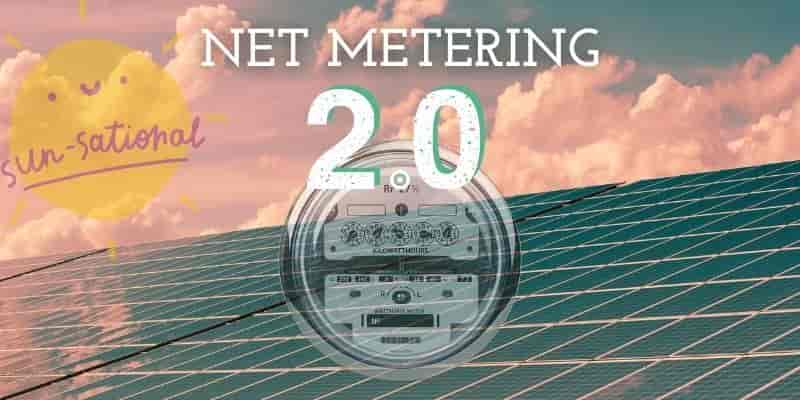
Ok, so it's 2016 and Net Metering 2.0 is up and running. Utilities were heard and more importantly, they were pleased.
5 policies were implemented to tackle the "free" grid usage and the shifting of costs towards non-solar households.
In short, now you have to pay more to account for that, you'll see why:
This is a one-time fee that has to be paid after your system passed the city inspection so it can be turned on.
PG&E: $145
SDG&E: $132
SCE: $75
This was not that bad of a change since it's only a one-time thing. Plus the majority of solar companies pay this for their customers so it's nothing you have to worry about.
This had already been instated but remained for version 2.0.
These Minimum Delivery Charges are supposed to cover the minimum costs of electricity delivery and its 24-hours availability.
It's a fee of about ¢33 per day plus a tiny amount of tax. To approximate the monthly cost you have to multiply that by the number of days in a month.
To be more precise, as of 2021, these fees are:
PG&E: ¢33 cents per day.
SDG&E: ¢33 cents per day.
SCE: ¢35 cents per day.

Example: Let's think of SCE. There are 31 days in October. So 31 x $0.35 = $10.85. Plus tax, it will end up in the $12s.
💭 This is the ONLY thing that has to be paid on a monthly basis aside from your solar payment.
NSCR's stand for Net Surplus Compensation Rates.
You know how you're able to carry over the excess energy you produce from hour to hour, day to day, week to week, and month to month?
Well, if at the end of a 12 months period you have excess energy, you will still be able to carry it over for the next year. However, it's going to be at a much lower rate than its original value.
This was instated because utilities were saying that it was like if they were buying that excess energy at a much higher price compared to the one they get it at. And once again, they were making non-solar users pay for the difference.
And how much less is it going to be worth?
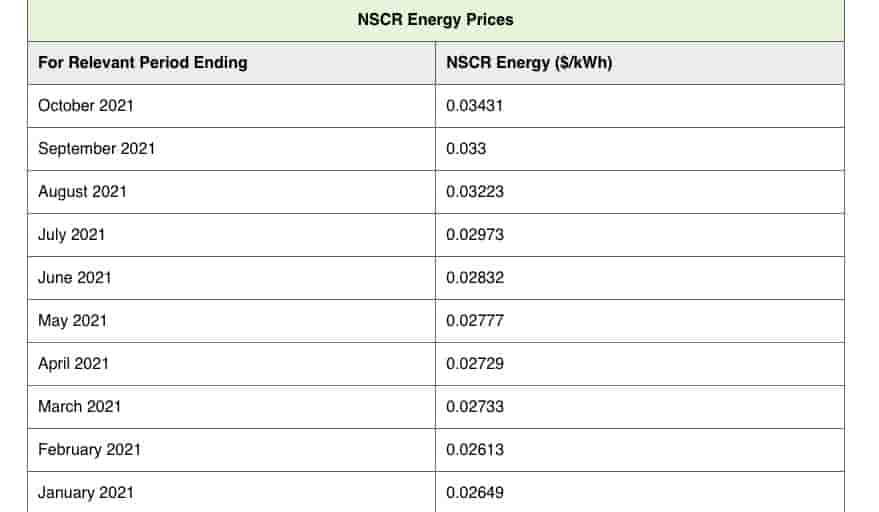
The average kWh with SCE, SDG&E, or PG&E costs ¢30. But the NSCRs are valued at wholesale electricity prices, which would be from ¢2 to ¢4. That's why they're so low.
Example: Let's say that after 12 months you have 300 kWh you didn't use. If the kWh is worth $0.30, that would be $90 of energy credits (300 kWh x $0.30 = $90).
Now, if we take the middle range of the NSCRs at ¢3, out of those $90, you would only get to carry over $9 for the next year (300 kWh x $0.03 = $9).
💭 But remember, this is ONLY applied to the excess energy at the end of every 12 months from the date your system was turned on, also called the PTO Date (Permission To Operate).
TOU stands for, "Time Of Use".
Under
Net Metering 2.0, when you go solar you will
automatically get switched over to a
TOU Rate Plan instead of the classic Tier Plan you're probably used to. That's if you were not already enrolled in one.
The
only difference with the standard Tier Plans, would be that instead of having a fixed price per kWh, its price will change according to the time of the day.
It'd be something like this:

This might have you thinking: "How does it affect me if I go solar?
Well, the problem here is that the energy also gets credited according to the time in which it was generated, and by the time Peak Hours hit and you start asking back for the excess energy you already produced during the day, it's going to cost a little more...
Example: If you generated 10 kWh from 8:00 am to 3:59 pm, they'd be worth $3 (10 kWh x $0.30 = $3). Now let's say you used them all up during peak hours.
If we did 10 kWh x $0.47 -which would be the cost per kWh during peak time- that would be $4.7 bucks of energy. It's like you had technically used $1.70 more in energy.
If this was not factored into the design of your system that's money that you're going to have to pay to the utility.
✅ However, this is NOT that big of a change and can be countered by simply increasing the system size needed.
💭 Remember the guy paying $291 with solar, as opposed to $427 without it? His system was designed taking TOU Rates into consideration. It's like if they were not even there. Once again, there's the importance of a properly sized system.
Before Net Metering 2.0, these costs were canceled out by the excess energy you produced. But according to the utilities, they were not able to recuperate these costs by how their economics work.
The NBC's were instated so that homeowners with solar would also pay their share for low-income and energy efficiency programs that utilities have in collaboration with the state.
An NBC is a charge from ¢2 to ¢3 cents that gets added to every kWh you import from the grid. Or at least that's what almost everybody says because they don't truly know how these guys work...
And by the way, they're non-bypassable... -I wonder if that's where they got the name from? 🤔 -
The thing with NBC's is that they get calculated per hour and per kWh,
not only per kWh. And that's where most people get it wrong...
So let's take a look at How To Calculate NBCs:

Image taken from our friends at NorcalSolar.org
After running some numbers, we can estimate that 63% of your usage in kWh will get an NBC. But let me explain:
NBC's will
ONLY come around when at the end of any given whole hour in a day (8am, 9am, 10am, etc), your production was less than your consumption. That means you will get one NBC for every kWh consumed
beyond
your total production in that 1-hour window.
So if you are ever in doubt, pull up your calculator and plug in this highly complex mathematical operation ONLY during hours where your consumption was more than your production:

1 Hour Solar Production - 1 Hour Energy Consumption
=
Amount of kWh that will get an NBC attached to them. Like a leech.
And how would that look like in dollar numbers?
Imagine that your average energy bill was $427 before solar, just like the guy from the case study we did in Section #1...
Not that bad huh? I bet you were thinking they would be a lot more!
I know it's still a little something, but hey, if you're already paying $291 with solar instead of $427, that's way better even with NBC's around.
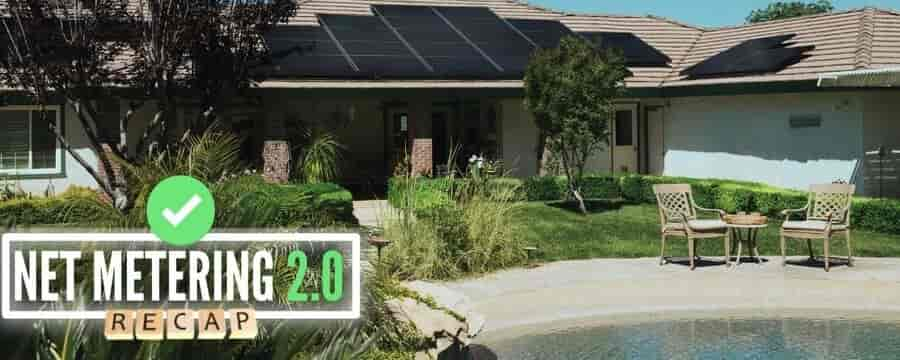
A grandfather clause in the Senate Bill protects you from having any changes done to these NEM 2.0 agreements for 20 years from the date you went solar:
✅ The Minimum Delivery Charges and the NBC's will pay for themselves with the savings from the first 3 to 4 months of the year.
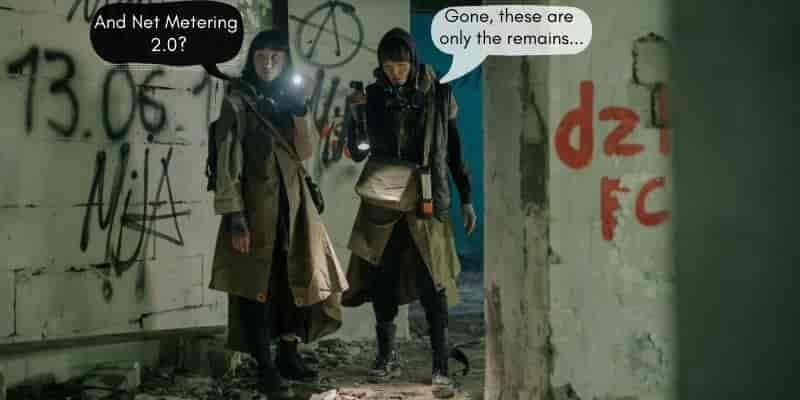
The zombie apocalypse is nothing compared to what's coming... Net Metering 3.0.
So if you've been thinking about going solar, right now it's do-or-die.
Here is why:
When version 2.0 was put up back in 2016, the CPUC decided that it was going to be revisited by 2019 to evaluate what needed to be adjusted and if solar needed fewer incentives to keep flourishing.
A golden opportunity for utilities yet again.
But wait... 2019 is more than gone! Does that mean it's over? Did I learn all this stuff for nothing?
No. To our luck, PG&E went bankrupt that year and COVID came shortly after. Therefore, they had to postpone the date on which the framework for version 3.0 would be revealed and that bought us some time.
It was supposed to be rolled out during 2019, but due to that, the final decision was pushed out to January 2022.
There has been a lot of speculation on whether January 2022 is going to be the deadline for those who want to make it into NEM 2.0, or if they are going to give a period of grace for a couple of months after they announce what NEM 3.0 is going to look like.
Word in the streets is that it might be January, based on all the recent pressure from the utilities, the union of electricians that work for them, and even some powerful allies like assembly member Lorena Gonzalez.
Who by the way, along with others, spearheaded the failed assembly bill AB 1139 with countermeasures even more radical than the ones seen in the proposals for NEM 3.0.
All to
arm-twist the CPUC into coming up with a final decision as soon as possible, in her own words.
Remember how the CPUC addressed everything that was putting stress on the grid and the shoulders of non-solar households?
Well, now utilities are saying that it was not enough and that they are still increasing the prices for those without solar. Even with all those procedures from NEM 2.0 in place.
Curiously enough, if they were really worried about people paying more, they would leave solar alone, but instead, their acts show that in reality, what worries them, is their profits.
Bold claim? Yes! Here is why I say that:
There are several studies like this one, from the CPUC themselves, stating that protecting the lines from wildfires in CA is one of the factors that are driving electricity prices up the most.
But they keep building them. Why? Because distribution & transmission is where 3/4 of the profits are at. See for yourself:

They buy the electricity at around 3 cents, remember? The rest comes from that. Simple math... increase your power lines and you shall increase your profit.
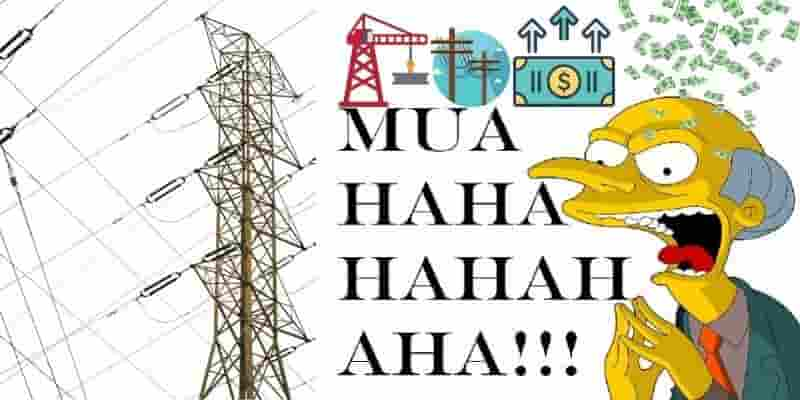
And what about this other study from a grid-planning company? With sophisticated modeling, they found that the cheapest way to grow and maintain the grid is actually through DER's (distributed energy resources) like rooftop solar.
How cheaper? 473 Billion cheaper.
And to top it off, I kid you not, even CAISO (a grid operator from CA) publicly issued a press release saying that rooftop solar changed local loads and that thanks to that, they backed out of a $2.6 Billion Investment in transmission lines.
Seeing is believing:

But even with all that out there, their claims always only mention their solar-induced problems, NEVER the ones that solar has solved for them and the avoided costs they get to enjoy thanks to us.
With that said, they're still asking for more of what they already have. And the proposals they have submitted to the CPUC as for what they expect from Net Metering 3.0 are far from pretty.
They go like this:
Remember we talked about these and that they came out to be around $12 per month?
They want to increase them. SCE is now asking for $56, PG&E is asking for $86 and SDG&E is asking for $91.
Because 12ish was not enough to keep the grid in good conditions, even with the present NEM 2.0 measures that supposedly account for that.
They are trying to cut the value of the excess energy by 75%! That would mean that the 1:1 rate we've been talking about would be 1 to 0.25. If the kWh costs ¢30, you would only be getting 7.5 cents for each kWh.
The most vital aspect of solar, taken from us. Wow!
Ok, we already have the excess energy being credited at 25% of its real value, but it gets worse.
If at the end of the month you have excess energy, which would be at least 6 months out of 12, they will not let you carry it over for the next month. It would just go to the trash.
The thing is that energy doesn't go to the trash, it goes into their grids and they make use of it! Why would something that's coming out of your house and of your pocket, have to be given to them for free?

If that didn't blow you away, I don't know what will. But I wouldn't expect less from these guys, there's too much in play for them to just leave solar to its own.
The worst thing in all this is that the net metering agreements are designed to be revisited every few years. So from here, it can only go down.
And that's supposing that the attacks won't keep coming. But rest assured they will, because their profits come from extending the grid, even if that means raising their prices for everybody.
And the more terrain they gain, the worse it's going to get, just like we've already seen with other states.
Don't let this one pass you by.
Now is when. The boats have yet not sailed. Jump on them now and save yourself by taking advantage of the legal protection while it's still available before these guys pull out all their cards.
(If you're reading this before December 10th 2021, you can still make it into Net Metering 2.0. Remember that it takes some time to get your project approved and installed).
The hidden-concept that will allow you to know for sure if your system will work or not.
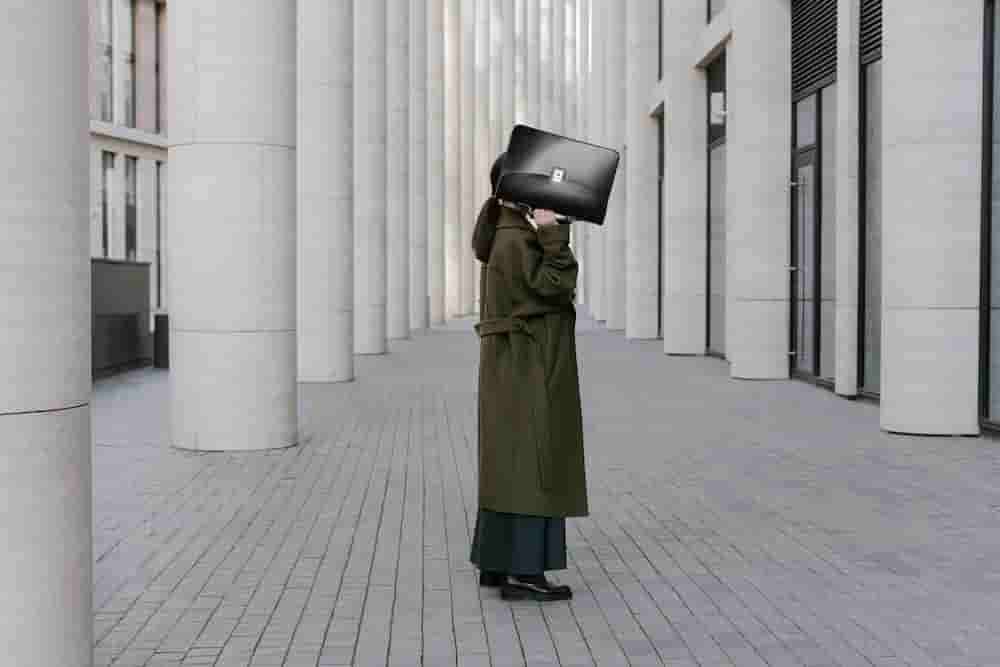
Believe it or not, this one thing called
offset has contributed to
polarizing the opinions about solar like nothing else. And with all reason, since many solar companies use it to their advantage to sell
undersized systems. You'll see why.
After getting net metering out of the way, it's time to talk about that. It's fairly straightforward:
Well, it only has to do with whether the company gave you what you need or they promised you the moon but delivered a miniature of it instead. Just that tiny bit. Due to this:
I've seen some solar companies do one of these 2 things. In the worst cases, even both.
#1 They hide this concept from their customers
They make it look like it were a hard-to-understand solar industry jargon when in reality it's as easy as it gets. All to avoid talking about it.
I've seen project spec sheets with that big bold number at less than 100. But they still promise their customers they'll get 100% of the energy they need from their solar.
How is that even possible if the offset is not at 100%? You see what I'm saying?
That's where the importance of informing yourself comes into play. Props to you because that's exactly what you're doing right now. Had the poor unsuspecting ones known this before, they would've not put themselves into that situation.
Preventing this is easy.
Just make sure that your project
clearly states the offset at 100% and you'll be good. As easy as that, but in hopes of making it even clearer, here's an image of how it should look like:
#2 Altering the numbers
There is a reason why people who design the systems are the ones in charge of that and that only. But like with everything, funky people will always try to find their way around things. And offset was not the exception.
Why do they do this? To either increase the commission they get from the install or because there's a shortage of equipment and they just can't let that extra sale slide by them.
Sadly, after projects are designed, I've seen sales reps get comfortable with design tools, enough to be able to alter the design themselves to where they make the numbers work.
They think they're so smart and that they fully understand this, but in reality, the performance of the system is being damaged and it's going to cost the homeowner a couple thousand bucks.
Are these acts of bad faith or are they not even aware they're wounding their clients?
Even the big names are guilty of this! The good thing is there are already class-action lawsuits in the works for them. At the end of the day, one gets what one deserves.
I know, I know. You're probably saying "who are them?", "tell me their names". I swear I'd love to, but if I did, we'd be the ones getting sued and not them haha.
Instead of that, why don't we talk about how you can avoid these hardships.
With the offset tip I just gave you in the image above, you're already more protected than many naive homeowners.
But with these 3 tips that I'm about to give you, you'll be 100% protected. Just like your offset! Caught the joke there?
Tip #1
Reps can tinker with designs as much as they want. What they don't know is that there's still something at sight for all of us that gives it away. When projects are altered, the offset might still show 100%, but these 2 numbers will never correlate...
Even if the offset is at 100%, watch for these two. The 1st one, from top to bottom, is how much energy your house uses per year. The 2nd one is how much of that your solar will produce.
It's as easy as making sure there's not a huge gap between them. Meaning that your solar production (2nd number) shouldn't be way below your yearly consumption (1st number).
This is the only way you can ensure that your system is going to be offsetting 100% of the energy your house needs because it was properly sized. (Yes, this is where the word comes from).
It's like being able to see into the future and knowing it'll work.
Tip #2
Interactive project sheets. Yup, that's it!
They're such beautiful things because they help bring transparency to life when it comes to your project. See for yourself:
They let you click around and plug in your own numbers to see what would happen if you modify something. They're directly linked to the original design so that NO funky business can take place.
If somebody changes something, all of the math will be recalculated and all of the numbers in the project sheet will be updated. Including offset, production, performance, etc. Now that's some transparency!
In hopes of taking that to next level, we offed our sales reps and switched them to specialists. Now the person that designs your project, and that knows the ins and outs of it, is the same you'll be talking to.
"They might not be the most brilliant in persuasion techniques, but they sure as hell are the most proficient and capable ones when it comes to designing a foolproof system and helping you understand why it would work." (De La Cruz, SOLARI® C.E.O., 2021)
Tip #3
I had to save the best for last. Somewhere in the following sections, you'll find this tip.
But don't go looking around for it just yet. I know you want to haha!
Instead of that, go with the flow because this next section is going to shed light on a situation that could take a toll on the lifespan of your system.

I've been able to find hard-to-understand articles on the subjects above, but as of 2021, I haven't seen one that goes deep on the importance of what I'm about to tell you.
And that's panel degradation!
When they blow their cover and they have to speak about this, I've heard companies & reps say:
Excuse me for the words, but what a load of 💩 !
It's all excuses and lies to avoid going into uncharted territory, that to their eyes, makes homeowners ask more questions and that makes them scared of "losing the sale".
Well after this gets out, it might just end up costing them the sale anyway for hiding stuff. Now you know they degrade!
Decisions are yours, and only yours to make, not by some company that manipulated your thought process by sweet-talking you with all the lies revealed so far.
With that said, let's go deeper...
Just like with our faces, when wrinkles appear when we start getting old (unless you like to botox yourself), time takes its toll on the components of a solar system.
That's normal, every product wears with time except for those military-grade phone cases. Things like corrosion and the high voltages these units continuously carry, contribute to this.
"It doesn't actually affect you". Or at least that's what others would say haha. Right? But getting serious here... it actually does, and a lot.
The average solar system will degrade at a max of 26% after 25 years. This doesn't mean that after 25 summers the system will suddenly be like "hey, let's degrade already".
No, this is a gradual process where they steadily decline year over year, and when that much time has passed, their total degradation will be lingering just below or at a max of 26% according to manufacturers' warranties.
But degradation still sounds fancy to me, let's put it in real-life terms.
What this means, is that after all those years, a solar system would only be cranking out 74% of what it was able to in the beginning. In other words, it'll only be producing 74% of the energy a house would need.
See how this could affect you and how relevant speaking about this is?
I'm with you. It's not at all.
But the good news is that as of today, there are these secretly kept panels that defend your trenches with the same might as the Marines or the Air Force defend the U.S.A.
Yet again, companies do their best to hide their existence because they can make a bigger profit from selling outdated ones to unsuspicious homeowners (not you).
By flashing things like an offset at 100% the average homeowner would assume their system is going to work. And it would technically do. In the beginning. But what about down the line?
Why would a proper offset matter, when it's going to quickly decline after you get it installed?
The million-dollar question. I like to call them 'ninja panels' because of the secrecy with which they're kept.
You will only see solar companies bring these guys up in case of an emergency, which to them, would be an informed prospect. But enough about the bad guys, let's talk about the good guys.
What does it take to be a ninja panel? Take a look:
Withstanding time better than the average ones and most importantly, managing to keep the degradation at a max of only 8% after 25 years, compared to the other ones at 26%.
But degradation is not the only thing they crush. Such leaps in technology had to yield other benefits.
Remember when we spoke about Tier 4, that the odds of panels nowadays breaking, corroding, or plainly failing, had dropped by a whopping 85%? Well, that's only with these guys.
Having a solar system with a max degradation down to 8% doesn't mean you'll have a system producing only 92% after 25 years, at least not here at SOLARI®. Here is why:
From the moment your project is getting designed, we do our best to get it to 108% offset to pre-compensate for that before it even happens. That way, by the end of those 25 years, it's like you had just gone solar since you'd be starting at an offset of 100%.
Let's pretend that XYZ solar company didn't properly inform you on this from the get-go. Solar would still be worth it with the amount of money it will save you.
Heck, even with non-ninja panels that degrade at 26%, solar would be more than worth it. Radical claim? Yeah!
But don't take my word for it, see for yourself. I will
show you a comparison table of the savings -with ninjas and without them- of one of our customers.
And yeah, in case you were wondering how the story ends, he ended up getting the ninja ones! Drag the arrow left and right to see the comparison:
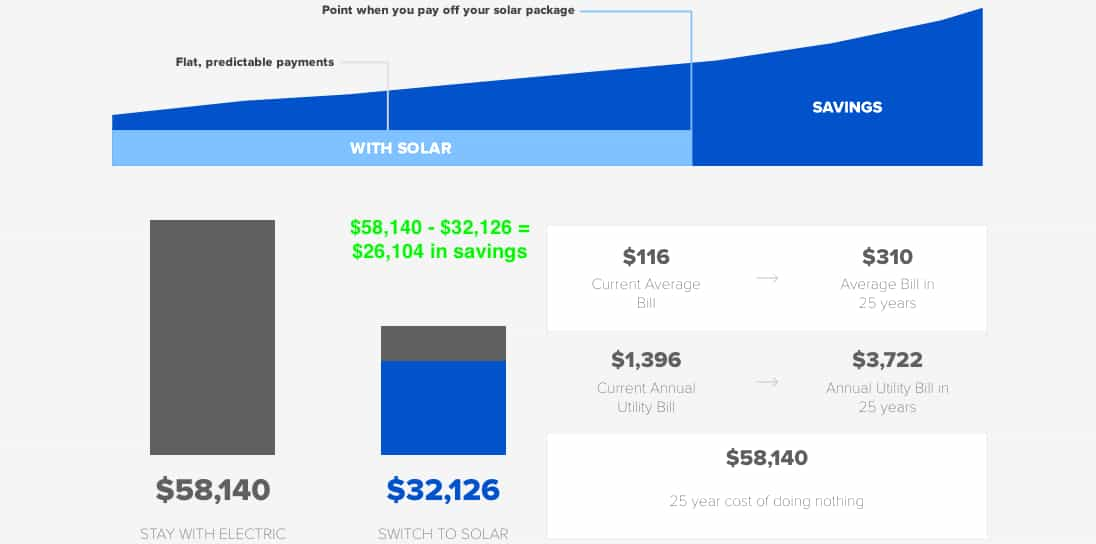
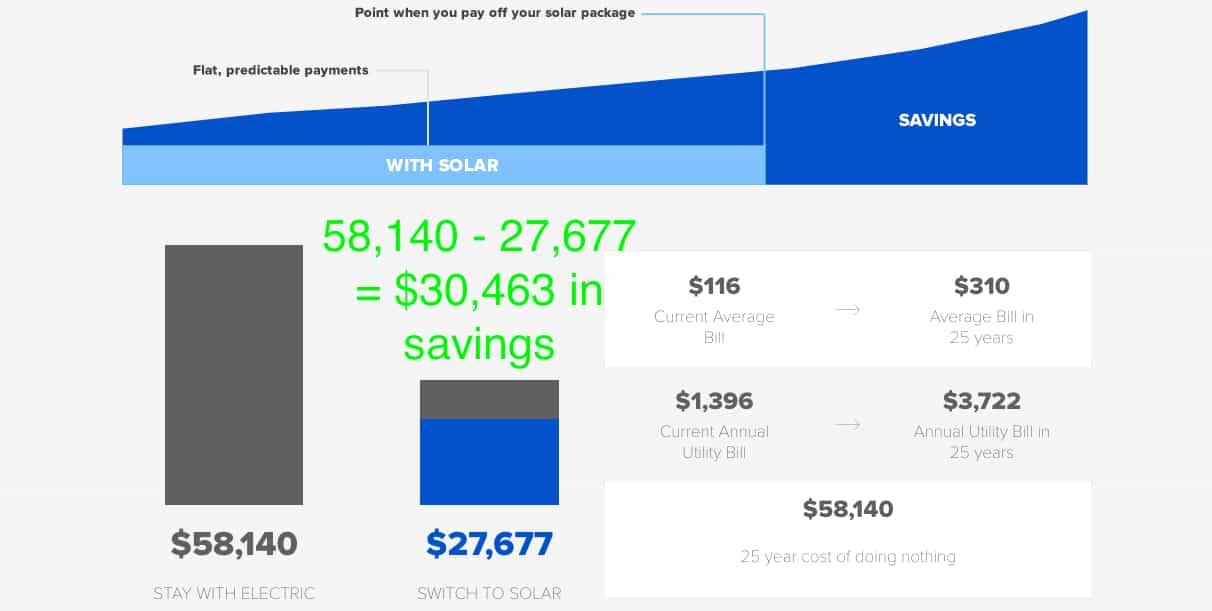
How crazy is that? Seeing is believing.
That doesn't mean we vouch for the bad practices of other companies, but it just goes to show that even with 💩 solar you can save a chunky little something.
If bottom-of-the-food-chain panels already give you the higher ground, what kind of savings do you think you can expect with the good ones?

Bigger is not always better.
Well, women would actually be the only ones who can testify to that haha. I just hope it's the answer I expect to hear... But in the solar world, to our luck, there's no debating that. Bigger is NOT better.
Every time I walk the streets, I see a lot of houses with what I consider to be my Top 2 Enemy in the whole solar industry. Top 1 are companies with all the bad practices that I already mentioned and the ones that I have yet to.
I would even say that more than walking, it feels like patrolling because all I do is watch out for what kind of systems people have installed. And I really feel for the ones who have to deal with this dude that I'm going to talk about.
I've heard countless horror stories where he's the protagonist.
The thing is they just can't withstand time. They tend to break down in the first years after installation. And who are we talking about here? String inverters.
For instance, check this extract from our website to better understand why they are to be feared:
With string inverters, your whole system behaves as if you had one BIG solar panel on your roof.
Let's pretend there was a tree that shades only one panel for a couple of hours a day. That would be the same as having a group of trees or something big shading your entire system!
It's not unusual to think that every unit in a solar system is independent, but in reality, if you are using a string inverter, that won't be the case.
Once again, solar companies tend to go for these because they're cheaper to use...
Think about this...
Since your whole system behaves like one big solar panel. What do you think would happen if a small component were to fail?
You got it right! Your whole system would fail!
And if it were you in that situation, you'd have to pay for both your solar and the bunch of energy you'd be temporarily drenching from the grid while you get it fixed!
During that time, it would almost be like if you didn't have solar at all. But more expensive this time since there would be 2 different bills to cover.
Bet you didn't sign up for that!
Like with everything, most of the time there is. And inverters are not the exception.
Nowadays we have something called Microinverters. Just like with the ninja panels, it amazes me how many companies do their best to keep these bad boys out from the roofs for their benefit.
They're like the Ant-Man®...
Small but powerful... they allow you to actually have every single panel out of your system behave independently!
This means that if you live in a house with a lot of trees, shading, or obstacles in the way of the sun, that's not a problem.
These little guys play a major role by putting a leash on those nasty energy bills.
They indirectly contribute to increasing your savings for these 2 reasons:
#1 They are tough boys.
Something that breaks often and easily, will only result in you going back to your old energy bill.
The good news is that even if it were the oldest of
microinverter generations, they would last more and withstand harsher conditions
than their malevolent brothers.
But that's not the best part, this next one is...
#2 They act as a repellant.
Remember Tip #3 earlier in the article? The one we decided to save for last? Well, this is it since they help you keep your offset alive even when things go south.
If a component or unit of your system ever fails, they will protect you from getting back that hideous energy bill.
While you're waiting for the company to fix the issue, these guys will keep the energy drawn from the grid at a minimum.
You'd be looking at a 20 bucks energy bill for that month, as opposed to a full-blown one like with string inverters.
So now that there's no one keeping this from you, what would you choose?
The clear-cut road where you have something that lasts and that will help you avoid double-billing in case a problem arises?
OR
Flipping the coin with something that will probably fail, like it has countless times before, and that will definitely not help you avoid considerable charges from the energy company in case of failure?

To end this on a high note, let's solve this mystery situation. Imagine this...
Everything's great. You're more than happy with your solar.
With the information you read in this article, you made sure you got your offset at the percentage you were supposed to, ninja panels, microinverters, etc.
You applied every single tip I gave you setting you up for success.
But suddenly, one day, everything comes crashing down. Your system is still producing what it's supposed to, you can see it on your phone app, but the energy company thinks otherwise. The monthly statement reflects almost no production whatsoever.
The only reason why you found out about this, is that you suddenly got hit by an energy bill when you were not even supposed to get one or expecting one.
QUESTION: What would be the probable cause for this?
That is a situation that many people face for overlooking the importance of that combo.
At first glance, it seems like it might not do much for you but it does. And companies use this to their advantage to keep the truth hidden and once again, artificially inflate their profits.
That -make it or break it- combo is comprised of this: a critter guard along with a live-monitoring app.
When you get your solar installed, there's a tiny space left between your panels and your roof due to the racking.
And that's like a 5-star hotel for pigeons, rats, and other godforsaken creatures. I mean, it only makes sense to them; it's cozy, it provides the perfect shelter, and it's not easily accessible.
Think of it: if you were a pigeon, there's no way you wouldn't get into illegal street fights with other pigeons over who gets to stay the night or earns the right to nest at such privileged location.
The thing is they've fooled us into believing that they survive on food. But actually, they don't! They get their vitality from pecking and destroying things. (Trust me on this one haha).
And your panels are not the exception to the rule.
The worst part is that the odds of your system failing because of this are way more than the ones that come from things like using string inverters or even non-ninja panels.
But don't panic, it's as easy as putting a critter guard that stops them from entering.
HINT: I already gave it away.
Ask yourself this...
How do you think you'd be able to know if something's off with your system? Or if something needs to be repaired?
This is where live monitoring comes into play. It will help you keep track of how your solar is doing and notice if there is something not working properly so that it can be promptly fixed.
Otherwise, the only way you would know if something is down would be by getting a beefy bill on account of the energy you didn't produce.
And by the time you get it, next month has already started...
On one hand, you have wrathful creatures chewing on your investment, and on the other, there's nothing that lets you know if one of them was actually successful in their endeavor.
Can you see now why this is a -make or break- situation?
Well, that's only if you decide not to protect yourself. But I don't think that'd be the case here.
The only reason why the masses expose their solar system to itchy jaws is because companies don't normally speak about the importance of this with the consumers.
Remember: Live monitoring + Critter guard is the way.
I think we can also agree that 'suddenly getting an oversized energy bill because your system was down for the last month', is not the best option to find out something was not properly working when there is a phone app that can help you prevent that.
Why make your life harder when you could make it smoother than -Santana's song "Smooth"- with what I just told you?
Now that there's no one dosing the "right amount" of information to you, do not let mistakes like passing on this water down your beautiful solar savings.
After all, you went solar to save money, not to lose it.

Our journey has come to an end, but before we say our goodbyes, let's make a quick recap of what we learned:
In case you missed one or over-read a couple, I'd recommend going back and taking a shot at them to get the full experience.
If you already made your way through all, there's nothing left to say but congratulations!
It's been a wild ride huh? Did you expect to learn this kind of stuff? I bet that before you got started, you thought it was all going to be fuzzy information.
I don't blame you, it's hard to find all the info you need in one place. And even more to find it in a clear-cut and understandable layout. I did my best to make this article the complete opposite of that.
I hope that my movie references along with the real-life pictures and examples helped you better understand all of this.
The path has been laid out
You now have at your disposal everything that was kept from you.
This will be your safety protocol since it'll allow you to go solar knowing exactly what to expect.
Now it's just a matter of putting this powerful information to good use by choosing The Bright Side© over The Dark Side©.
Couldn't end this without dropping one last movie reference. Caught it?
🧠
No-Fluff Blog Posts
Let us know what you think...
